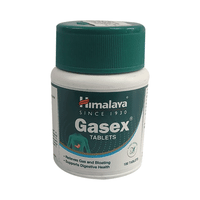Azit Max LB 250mg Tablet

Rs.66.90for 1 strip(s) (6 tablets each)
food interaction for Azit Max LB
alcohol interaction for Azit Max LB
pregnancy interaction for Azit Max LB
lactation interaction for Azit Max LB
food
alcohol
pregnancy
lactation
Azit Max LB 250mg Tablet may be taken with or without food, but it is better to take it at a fixed time.
None
None
CAUTION
It is unsafe to consume alcohol with Azit Max LB 250mg Tablet.
UNSAFE
Information regarding the use of Azit Max LB 250mg Tablet during pregnancy is not available. Please consult your doctor.
CONSULT YOUR DOCTOR
Azit Max LB 250mg Tablet is unsafe to use during breastfeeding. Data suggests that the drug may cause toxicity to the baby.
UNSAFE
SALT INFORMATION FOR Azit Max LB
Azithromycin(250mg)
Uses
Azithromycin is used in the treatment of bacterial infections. It is used in bacterial infections of tonsils, sinus, ear, nose, throat, skin and soft tissues and lungs (pneumonia).
How it works
Azithromycin is an antibiotic. It works by preventing synthesis of essential proteins required by bacteria to carry out vital functions. Thus, it stops the bacteria from growing, and prevents the infection from spreading.
Common side effects
Vomiting, Nausea, Abdominal pain, Diarrhea, Headache, Palpitations, Chest pain, Indigestion, Flatulence, Dark colored stool, Vaginal moniliasis, Vaginal inflammation, Fatigue, Rash, Itching, Photosensitivity, Nephritis, Dizziness, Vertigo, Angioedema (swelling of deeper layers of skin)
Lactic acid bacillus(60Million spores)
Uses
Lactic acid bacillus is used in the treatment of diarrhea.
Common side effects
Bloating, Flatulence
SUBSTITUTES FOR Azit Max LB
72 Substitutes
72 Substitutes
Sorted By
 Rs. 85pay 23% more per Tablet
Rs. 85pay 23% more per Tablet Rs. 160.50pay 40% more per Tablet
Rs. 160.50pay 40% more per Tablet Rs. 99pay 43% more per Tablet
Rs. 99pay 43% more per Tablet Rs. 86pay 25% more per Tablet
Rs. 86pay 25% more per Tablet Rs. 82pay 19% more per Tablet
Rs. 82pay 19% more per Tablet
Expert advice FOR Azit Max LB
- Do not skip any doses and finish the full course of treatment even if you feel better. Stopping it early may make the infection to come back and harder to treat.
- Take it 1 hour before or two hours after food.
- Do not take antacids 2 hours before or after taking Azithromycin.
- Diarrhea may occur as a side effect but should stop when your course is complete. Inform your doctor if it doesn't stop or if you find blood in your stools.
- Stop taking Azithromycin and inform your doctor immediately if you develop an itchy rash, swelling of the face, throat or tongue or breathing difficulties while taking it.
Frequently asked questions FOR Azit Max LB
Azithromycin
Q. Is Azithromycin safe?
Azithromycin is safe if used at prescribed doses for the prescribed duration as advised by your doctor.
Q. What if I don't get better?
You should inform your doctor if you do not notice any improvement in your symptoms after 3 days of taking Azithromycin. Also, if your symptoms get worse, inform your doctor immediately.
Q. Can the use of Azithromycin cause diarrhea?
Yes, the use of Azithromycin can cause diarrhea. It is an antibiotic which kills the harmful bacteria. However, it also affects the helpful bacteria in your stomach or intestine and causes diarrhea. If you are experiencing severe diarrhea, talk to your doctor about it.






















